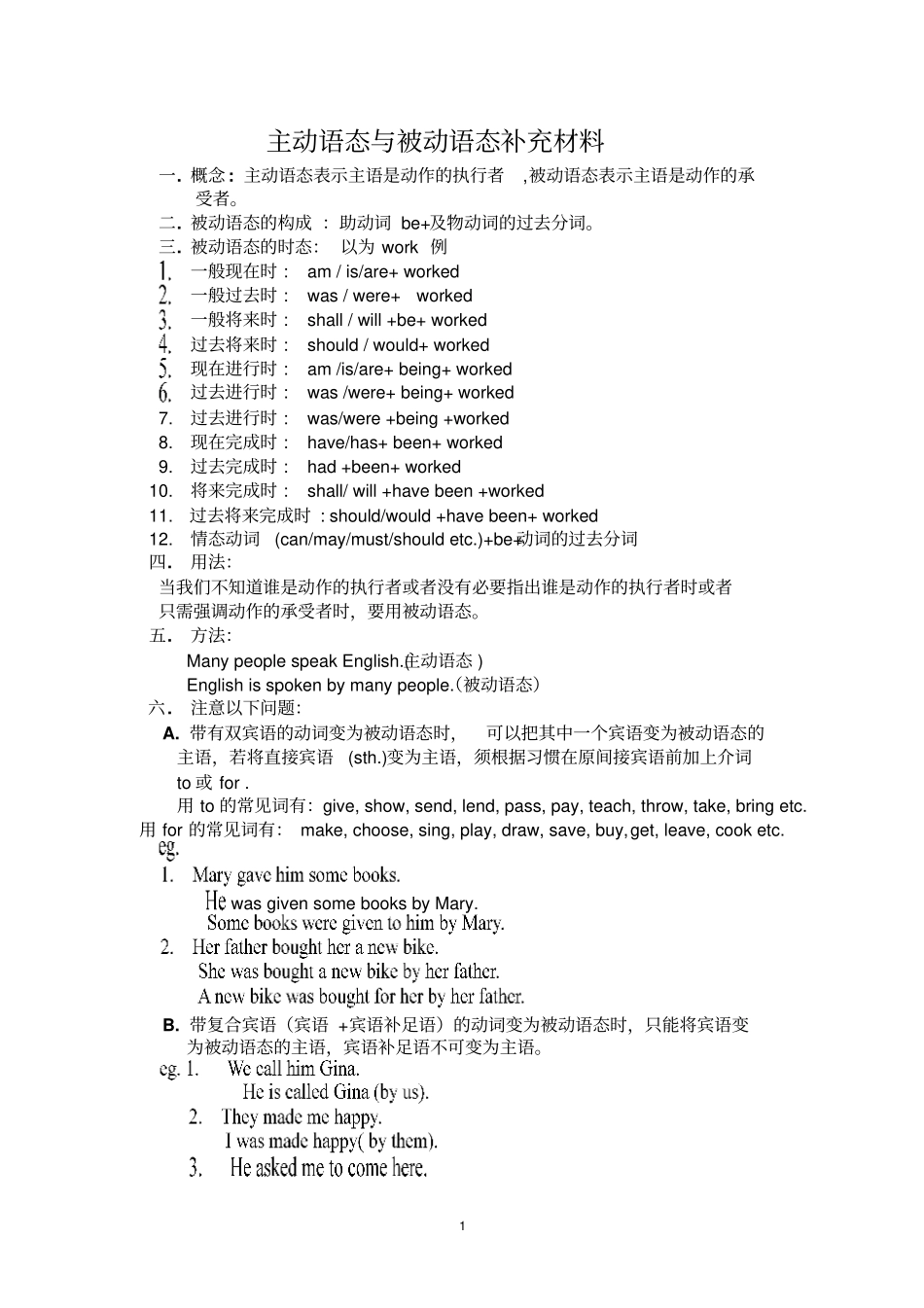1 主动语态与被动语态补充材料一. 概念 : 主动语态表示主语是动作的执行者,被动语态表示主语是动作的承受者。二. 被动语态的构成 :助动词 be+及物动词的过去分词。三. 被动语态的时态: 以为 work 例一般现在时 : am / is/are+ worked 一般过去时 : was / were+ worked 一般将来时 : shall / will +be+ worked 过去将来时 : should / would+ worked 现在进行时 : am /is/are+ being+ worked 过去进行时 : was /were+ being+ worked 7. 过去进行时 : was/were +being +worked 8. 现在完成时 : have/has+ been+ worked 9. 过去完成时 : had +been+ worked 10. 将来完成时 : shall/ will +have been +worked 11. 过去将来完成时 : should/would +have been+ worked 12. 情态动词(can/may/must/should etc.)+be+动词的过去分词四. 用法:当我们不知道谁是动作的执行者或者没有必要指出谁是动作的执行者时或者只需强调动作的承受者时,要用被动语态。五. 方法:Many people speak English.(主动语态 ) English is spoken by many people.(被动语态)六. 注意以下问题:A. 带有双宾语的动词变为被动语态时,可以把其中一个宾语变为被动语态的主语,若将直接宾语(sth.)变为主语,须根据习惯在原间接宾语前加上介词to 或 for . 用 to 的常见词有:give, show, send, lend, pass, pay, teach, throw, take, bring etc. 用 for 的常见词有: make, choose, sing, play, draw, save, buy, get, leave, cook etc. was given some books by Mary. B. 带复合宾语(宾语 +宾语补足语)的动词变为被动语态时,只能将宾语变为被动语态的主语,宾语补足语不可变为主语。2 I was asked to come here (by him) 在 see, let, make, hear, watch etc.动词之后,作宾语补足语的动词不定式不带 to,但在变为被动语态时,则一定要加上to。saw them play football just now. 2. We often hear her sing in English. D. 在某些 “不及物动词 +介词/副词”(相当于及物物动词 )的句子中,变被动语态时,注意不要丢掉介词/副词。eg. politely. E. 当“动词 +宾语 +宾语补足语 ”结构变为被动语态时, 将宾语变为被动结构中的主语,其余不动。例如 :Someone caught the boy smoking ...


